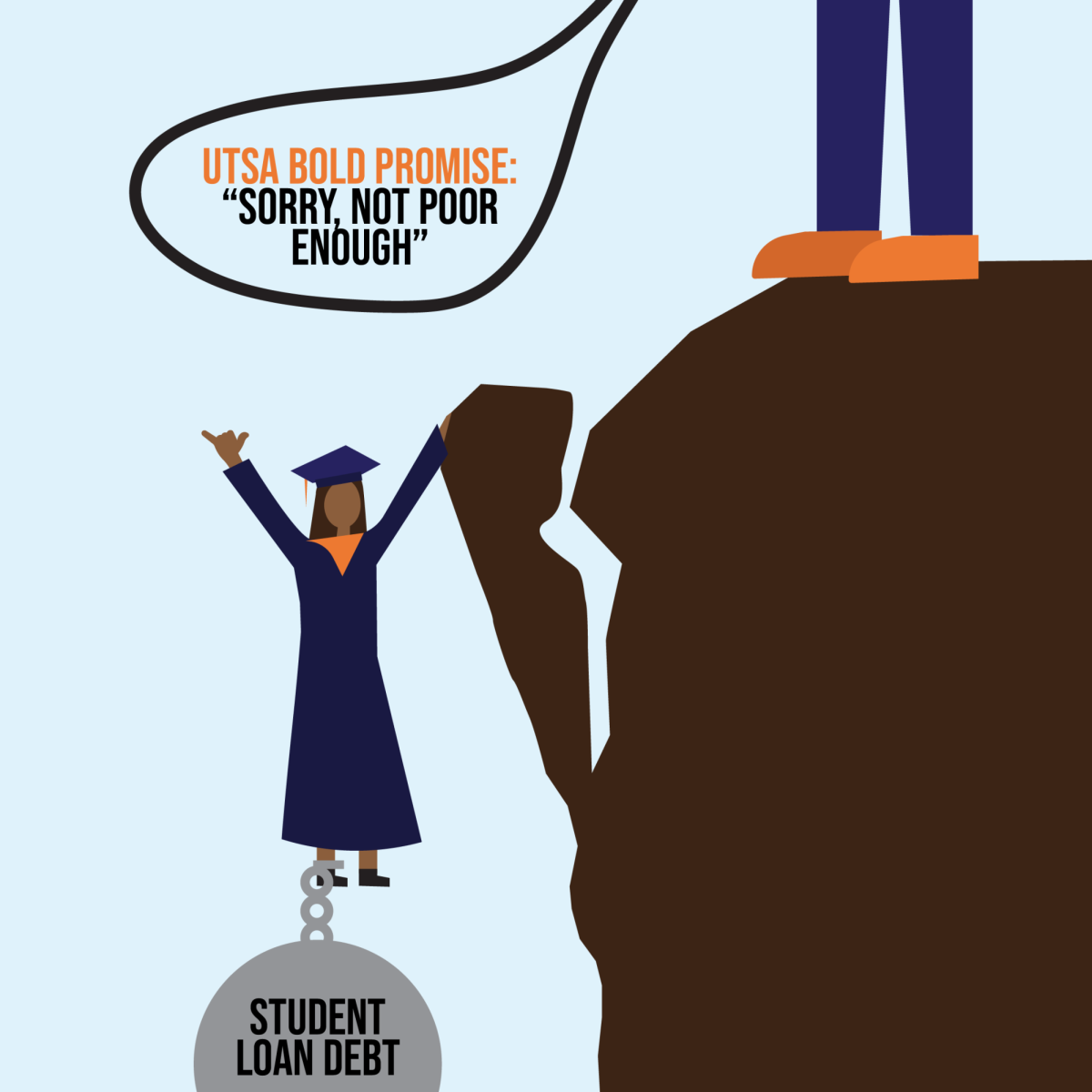The cost of college has always been a fun topic to discuss, especially recently with it being a major talking point for presidential candidates. The cost of tuition has been rising at a rapid rate since the turn of the century. Since 2000, tuition and fees have risen by 78% at public four-year universities. That, coupled with the decrease in access to affordable housing and the increasing cost of living, has put a strain on university students.
That information is nothing new to your average college student. The University of Texas system, along with other public universities across the nation, have taken steps to lower the cost of tuition. Universities have committed to covering tuition costs, leaving students under a certain family income with very little or no debt when they graduate. In 2022, the UT system approved its “Promise Plus,” a $300 million endowment providing funding to its various branch institution’s “free tuition” funds.
UTSA prides itself on being an affordable public university in the state compared to giants such as Texas A&M and UT. Every branch school in the UT System has a tuition program covering the cost of tuition, with varying stipulations of income levels and types of students they offer the program.
UTSA’s own Bold Promise will cover tuition for up to eight semesters for students if they fall under these conditions: they must be a Texas resident, have a family income up to $70,000, graduate in the top 25% of their class coming out of high school and enroll in 12 hours each semester.
Since the program’s inception in 2019, the Bold Promise has only been available for incoming freshmen and transfer students coming from the Alamo College District’s Alamo Promise program. The program is unavailable for transfer students or current continuing students. The only change to the program came in 2021, when the family income was increased from $50,000 to $70,000. Branch universities such as UT Arlington, UT Dallas, UT El Paso, UT Rio Grande Valley and UT Permian Basin offer their free tuition programs to freshmen, transfers and current students, while UT Tyler and UT offer their programs to freshmen and transfers only.
The only institution similar to UTSA is newcomer Stephen F. Austin University, which joined the system in September 2023. UTSA is stubborn about adapting and expanding the Bold Promise to more students. Other institutions, notably UT Dallas and UT Tyler’s programs, used to be available only to first time freshmen, but that has since changed with the recent endowment. University leadership, on the other hand, seems to be hiding behind their curtain of affordability and screwing students out of this life-altering program.
The Bold Promise, in its current state, penalizes individuals who may have had a challenging time in high school, especially knowing the difficulties that were faced during virtual learning. With such strict stipulations, one can assume that the university does not believe that a certain individual can break habits and adapt to become a better learner while in university.
UTSA is home to 30,000 undergraduate students, with only 1,847 students in the Bold Promise. If the university would like to maintain a leading position in the state of Texas’s public institutions, the leaders of UTSA must expand the program to transfers and to the heart and soul of the Roadrunner Nation — current students. In addition, expand the family income threshold and cut the top 25% of high school graduation class stipulations.
UTSA must no longer hide behind its marketing campaigns or slogans of being an affordable university when the university is not the most affordable in its own system. Recent history has not shown UTSA as being the most financially conscious, with leadership pushing the athletics fee increase all over campus last semester.
UTSA President Taylor Eighmy and other leaders seem to not care about students’ financial well-being after they leave the university. They use the success of students’ high school records to inflate their statistics of attracting “high achievers” and creating more profits for the university by limiting potential candidates to just a small pool.








